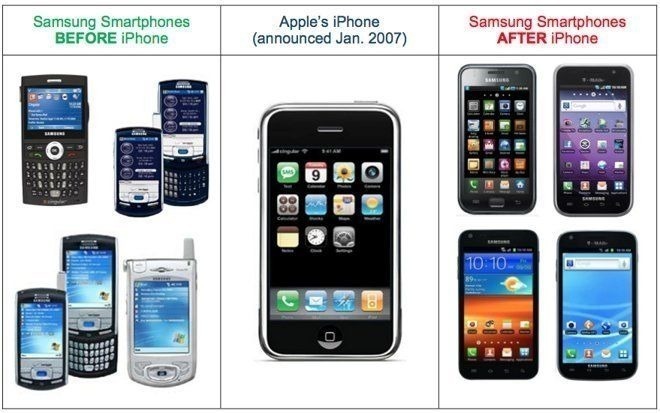As Apple and Samsung prepare to go head to head in court again, AppleInsider takes a look at the history of this particular long-running patent battle between the tech giants.

In a San Jose, Calif., courtroom on Monday, Apple and Samsung will once again square off in their seemingly endless series of patent litigation battles. In what's expected to be a five-day trial in U.S. District Court, the court will determine the level of damages from the earlier litigation.
The case, like many others in the past, will be argued before Judge Lucy Koh, who for jurisdictional reasons has presided over various Apple-related cases, including multiple past Apple/Samsung trials. Koh's latest ruling was in Apple's favor, and involved the denial of a class action certification concerning the iPhone 6 and iPhone 6s' so-called "Touch Disease."
The history of Apple and Samsung's legal confrontations is extensive and complex; at one point in 2012 the companies had more than 50 active lawsuits in at least 20 different countries, which is to say nothing of the various suits Apple filed against HTC and other Android device manufacturers. Most of the non-U.S. cases, however, were settled in 2014.
This particular case even inspired the false urban legend that Samsung had paid Apple $1 billion in nickels to settle a claim.
Apple and Samsung's present litigation dates back to 2011, when Apple sued Samsung alleging that they infringed on Apple's patents that are used in the iPhone and iPad. Samsung countersued not long after.
The first trial
The first trial took place in 2012 and was decided in Apple's favor, with the court finding that Samsung had violated Apple's patents for "Bounce-Back Effect," "Tap to Zoom," and others. Apple was awarded $1 billion in damages in August of that year.
Apple and Samsung appeared to reach a settlement in 2015, reducing the amount to $548 million, although the case continued through appeals.
By the time the settlement was reached, none of the 16 products named as infringing were on the market any longer.
"Article of manufacture"
In late 2016, the case reached the U.S. Supreme Court. In late December 2017, the court unanimously sided with Samsung, ruling that design patents only cover individual smartphone components, rather than the phone itself.
The Supreme Court ruling did not mean the case it was over. It was sent back down to a lower court for a damages re-determination, and that brings us to this week.
During the re-trial Samsung will not have to disprove that an entire smartphone is the "article of manufacture." Instead, Apple has the "burden of persuasion" to identify how the infringed patents apply to the whole product.
What to expect
Samsung has already paid the $548 million to Apple, and the "additional remedy" of $149 million in damages included in that are not being discussed. So, that leaves the remaining $399 million.
In total, Samsung sold nearly 11 million devices that infringed on Apple's patents -- a fact that is also not up for debate. The sale of those devices cranked out over $3 billion in revenue, so the Supreme Court ruling may not change the ruling that much, as the award is already less than the total value of the products. What it will come down to is how much Apple's usability and design patents contribute to the device's sales as a whole.
Top executives are not expected to testify. However, Apple's Greg Joswiak, designer and patent-holder Susan Kare, and Senior Director Richard Howarth are all expected to testify.
Judge Koh runs a tight ship. In previous trials, both parties were limited to a fixed period of time, to bring the trial to conclusion in a speedy fashion. Those rules haven't been detailed to the public as of yet, but closing arguments are expected on Friday.
Jury deliberation will take as long as it takes.


